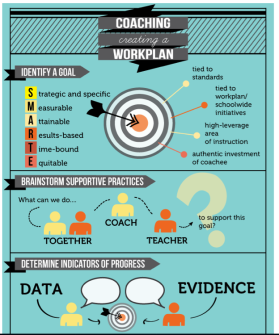This is the time of year when I fantasize that all coaches, everywhere, are deep in the process of creating work plans. Here’s the introduction from the chapter all about work plans (Chapter 7) of my book:
What distinguishes effective coaching from other kinds of professional development activities is that coaching is an ongoing effort focused on developing a specific and agreed-upon set of skills or practices. Though a client might experience coaching as a series of meaningful conversations, the coach is consciously working within a structure and toward an end. The work plan is the structure that holds the conversations, questions, and actions that make up coaching. It is a foundational element of the intentional and directed nature of professional development.Without a work plan, a coach can feel lost and overwhelmed...
The rest of the chapter walks you through the 10 step process of creating a work plan, and offers many examples of what these look like and what the conversations with clients sound like when they’re being created. If you aren’t familiar with the power of work plans or how to create them...read my book.
But what I really want to share with you (because I know that many of you have read this chapter and are hard at work on constructing plans!) is this graphic created by the most brilliant Kristin Houser, an instructional coach in Aurora, CO. Here’s a snap shot of what it looks like:

A colleague found and forwarded this to me and I can’t tell you how thrilled I was! What a skill Ms. Houser has in being able to create such a fantastic visual representation. And I am so tickled to see how my own work has led to the creation of other extremely useful work. Thank you, Kristin!
And here’s another chunk of the graphic (you’ll just have to click on the link to see the whole thing).
